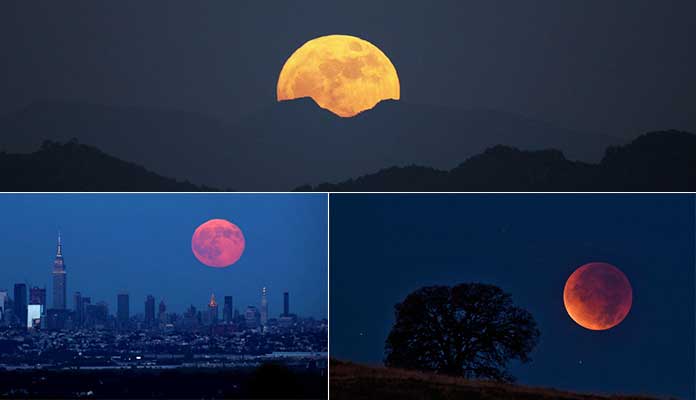2018 has brought astounding celestial events to feast upon. On the first day of the year, people of the planet witnessed a breathtaking Supermoon; another such view is lined up for them in the form of Blue Moon that will appear on Wednesday, 31st January.
What is this Blue Moon?
This very term ‘Blue Moon’ is intriguing in nature. People wonder if the moon will be blue on this night, just like sky looks in the daytime. Well, the phenomenon doesn’t allude to anything like a change in color. Astronauts call a second Supermoon appearing in the same calendar year as a Supermoon. As mentioned earlier, we have already witnessed the first Supermoon on January 1, 2018.
The new Supermoon will be same as the first one. It will appear 30% bigger and 14% brighter for being near to the Earth’s sphere. The lessening of distance between earth and moon is a factor that makes a moon’s size and brightness more prominent.
So, what is the Blood Moon?
So, why the Supermoon is also called as the blood moon. Will it appear in blood red color if not in blue color? The answer is no because such etymology has nothing to do with the change in color. It is a fact that this blue moon will appear reddish orange, or similar to this shade due to partial lunar eclipse. But, the term blood moon denotes to some prophecies associated with the lunar cycle and its impact on people’s life. A blue moon on January 31, would be a blood moon but it wouldn’t appear blood red.

Lunar Eclipse on January 31
While seeing a Supermoon is not an unusual thing, the event of January 31 is going to be a rare phenomenon of its kind. The world would witness a blue moon, Supermoon and a lunar eclipse all at the same times, after almost 150 years. Last time, the same event had occurred in 1866 in America. According to few reports, blue moon and total lunar eclipse had happened in Asia on December 30, 1982. So, few parts of the world would view this celestial event, after 35 years.
Where to see the Blue Moon and Lunar Eclipse?
People would be able to see Blue Moon from almost all the parts of the world. But a total lunar eclipse wouldn’t be visible everywhere. People living in the US, Scandinavia, Eastern Europe and India will see a partial lunar eclipse, rest of the world would be able to see a complete eclipse. In case of partial lunar eclipse, Earth shadows a part of the moon and bars the sunlight to reach there. Contrary to this, a complete lunar eclipse occurs when Earth completely dims the moon, turning it into a copper colored or reddish black colored disc.


